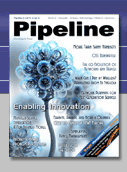
article page
| 1
| 2
| 3
| 4
| 5
|
Telecom Italia, Ericsson, Nokia-Siemens Networks, Siemens, Telcordia, Cisco, HP, Square Hoop and Peak8 Solutions. Agreeing on the requirements that need to be addressed will lead to further work to specify standards, either within TM Forum, or in other relevant partner industry organizations that will be identified and recommended as best suited for a particular requirement.
Deliverables planned by the TM Forum include a common roadmap for digital commerce enablers -- encompassing device management, the content encounter vehicle, and new programs to address value chains and end-to-end customer experience management. A key aspect of this will be a device management framework – an architecture to describe how a device integrates into an overall end-to-end managed service delivery, with a base set of requirements that must include aspects such as location, presence, on/off status, screen aspect ratio, network types supported (e.g. 3G, GPRS), and advanced security features.
Envisioned device management collaboration projects in the TM Forum also include:
- Automated and enhanced device user support to lower costs and improve margins for device manufacturers, as well as to increase customer satisfaction and ensure brand loyalty
- Device and service provider procurement guidelines for enterprise buyers
- Management interfaces on devices to support QoS offerings, taking into account the impact to home networking device manufacturers
The concept of the TV, DVD player and the gaming console becoming a retail platform for the media industry is the classic over-the-top service. Telcos and MSOs can do very little to combat this – apart from applying gigabyte restrictions on the download capacity of broadband lines, which they will certainly do. But a far smarter move is to bundle a service broadband offering with the sale of every connected DVD, TV, or game console, with guaranteed quality of service (QoS).
|
|
Leading members of TM Forum have started to collaborate to define areas not yet fully addressed by the device management solutions and standards currently available |
|

- Enabling real time detection of the current device type being used by the end-user, as well as the real-time status of devices
There is usually no way (common or otherwise) to know the current status of devices (e.g. on or off). Device detection must be a multi-vendor-capable solution, collecting triggers and interacting with network elements independent of the different network element suppliers' equipment installed in the service provider's network.
Device detection/status has several main aspects:
- Device detection enables the service provider to detect new devices connecting to the network and also to trigger relevant actions in different network elements such as the device management server or the provisioning server.
- Device detection can also provide information when a new user starts to use the device. In this way the service provider is able to provision user-specific service parameters and/or initiate other relevant management of the device by using a device management server and triggering the provisioning server to do the same on the network. One example of this is in mobile networks when the phone is transferred to a new user and the new user has different subscriptions than the previous one.
|
|
|
|

|

article page
| 1
| 2
| 3
| 4
| 5
| |
|



